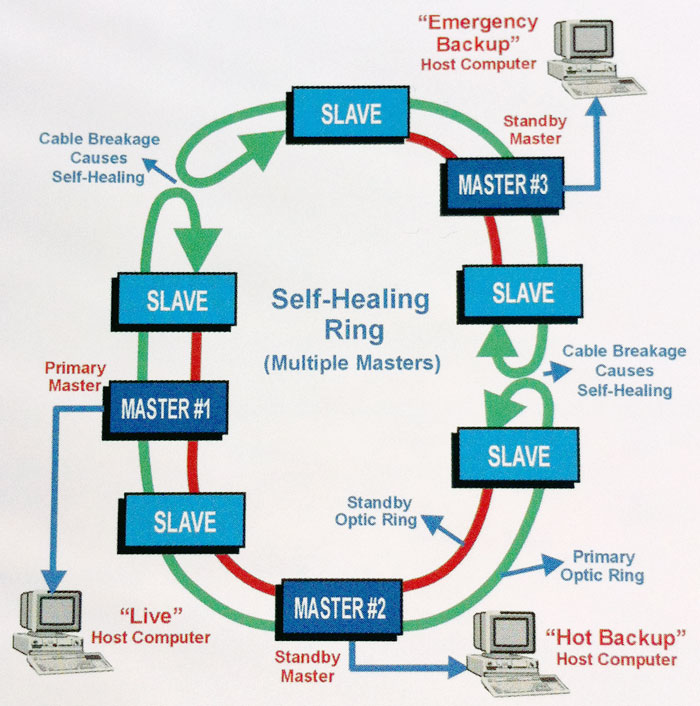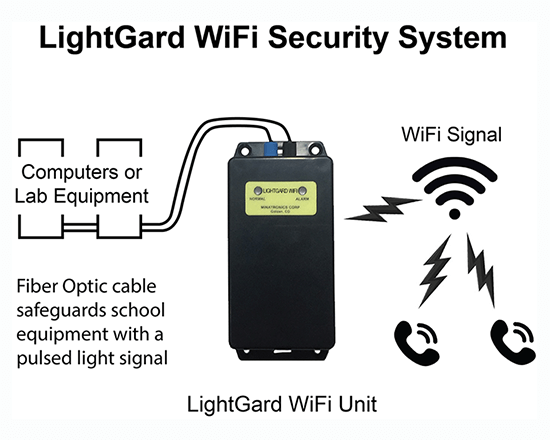Why Fiber Optic Safety And Security Solutions Are the Future of Security
The transition to fiber optic safety systems marks a significant improvement in the world of defense, driven by their phenomenal information transmission abilities and durability to external disturbances. As the landscape of safety progresses along with arising technologies such as AI and IoT, the possibility for fiber optics to enhance and redefine security frameworks ends up being significantly obvious.
Advantages of Fiber Optic Systems
Among the key benefits of fiber optic systems is their remarkable data transfer capability, which facilitates the transmission of big quantities of information over fars away without significant loss. This characteristic is especially helpful for protection applications that require the continual surveillance and transfer of high-definition video feeds, sensor information, and other essential details. Fiber optics can suit the growing demands of modern safety systems, guaranteeing that data stays undamaged and dependable.
Additionally, fiber optic cable televisions are much less prone to electromagnetic disturbance, which can be a considerable concern in environments with numerous digital tools. This resistance improves the integrity of the data being sent, consequently minimizing the danger of information violations or system failures. In addition, fiber optic systems are naturally much more secure than standard copper cable televisions, as using a fiber optic line without discovery is exceedingly difficult.
The sturdiness of fiber optic cords also contributes to their charm. They are resistant to ecological elements such as wetness and temperature level variations, reducing upkeep prices and increasing system durability. Overall, these advantages position fiber optic systems as a robust and effective option for modern safety infrastructures, making certain trusted and safe and secure data transmission.
Boosted Information Transmission Speed

The capability to transfer large amounts of information promptly assists in the smooth integration of high-def video feeds and advanced analytics. Safety systems can now process and assess details in real-time, enhancing feedback times and situational awareness. In addition, fiber optic links support longer transmission ranges without destruction of signal top quality, making them excellent for extensive security networks.
The raised speed of fiber optic systems not just improves the performance of safety procedures yet likewise reduces latency. This is specifically essential in critical scenarios where prompt decision-making can stop protection violations or minimize prospective threats. As companies continue to focus on safety and efficiency, the demand for rapid and reputable information transmission will definitely strengthen fiber optic systems as a foundation of modern-day safety and security facilities.
Resistance to Interference
Fiber optic safety and security systems constantly demonstrate extraordinary resistance to electro-magnetic disturbance, an important benefit in environments susceptible to electronic sound. Unlike conventional copper cables, which can be adversely affected by magnetic fields, radio regularity disturbance, and various other types of electrical disruption, fiber optic cable televisions utilize light to transmit data. This integral residential or commercial property guarantees that the signals remain clear and unchanged, despite bordering electronic task.
Making use of glass or plastic fibers in fiber optic technology produces an obstacle versus disturbance, enabling reputable data transmission also in challenging situations such as commercial facilities, metropolitan areas with high digital traffic, or locations near radio towers. This Read Full Report characteristic dramatically decreases the possibility of signal deterioration or loss, making fiber optic systems particularly ideal for safety and security applications where integrity and accuracy of data are paramount.
Moreover, this resistance to interference boosts the total performance and integrity of security systems, making certain that tracking and alert systems work seamlessly. In a globe where safety is significantly endangered by innovative modern technologies, the resilience of fiber optic systems attracts attention as a critical feature, reinforcing their condition as a vital element of modern-day protection facilities.
Cost-Effectiveness Gradually
Significant price financial savings can be achieved with time with the implementation of fiber optic protection systems. While the preliminary financial investment may appear greater contrasted to typical copper-based systems, the lasting monetary benefits emerge with decreased functional and maintenance expenses (fiber security). Fiber optic wires are naturally extra durable and much less vulnerable to environmental elements, which equates to lower replacement and repair expenditures over their life-span
Moreover, fiber optic systems call for less power to operate, which better lowers power expenses. Boosted information transmission capabilities permit less repeaters and amplifiers, decreasing devices financial investment and simplifying installment processes. The scalability of these systems also adds to her response cost-effectiveness, as companies can expand their safety and security infrastructure without sustaining significant extra costs.
Another aspect to think about is the boosted efficiency in surveillance and reaction abilities that fiber optics offer. Enhanced real-time data transmission can lead to quicker incident reaction times, potentially mitigating losses and obligations related to protection breaches. In sum, the lasting benefits of fiber optic safety and security systems not only validate the initial expense yet also place them as a financially prudent choice for organizations looking for robust protection options.

Future Developments in Safety And Security
Progressing technologies are set to change security systems, incorporating synthetic intelligence (AI) and artificial intelligence to improve danger detection and response abilities. These technologies will enable safety and security systems to analyze large quantities of data in real-time, identifying patterns and abnormalities that suggest prospective hazards. This aggressive strategy will certainly make it possible for faster decision-making and much more efficient event responses.
Additionally, the incorporation of the Web of Points (IoT) is leading the way for interconnected security gadgets, using comprehensive security and monitoring. Smart sensors can communicate information concerning ecological adjustments, while automated informs can notify security click site workers promptly of questionable activities.
Furthermore, the advancement of biometric innovations will further bolster security mechanisms. Face acknowledgment, finger print scanning, and retina identification are coming to be a lot more innovative, offering layers of authentication that are tough to bypass.
Final Thought
Finally, fiber optic security systems stand for a substantial development in defense modern technology, providing unparalleled data transmission rate, resistance to electro-magnetic disturbance, and long-term cost-effectiveness. As the demand for innovative protection options remains to expand, the assimilation of fiber optics with emerging innovations such as AI, IoT, and biometrics will better boost safety infrastructures (fiber security). The mix of these advancements will certainly ensure a much more safe and receptive atmosphere, solidifying optical fiber as a keystone of future safety and security systems